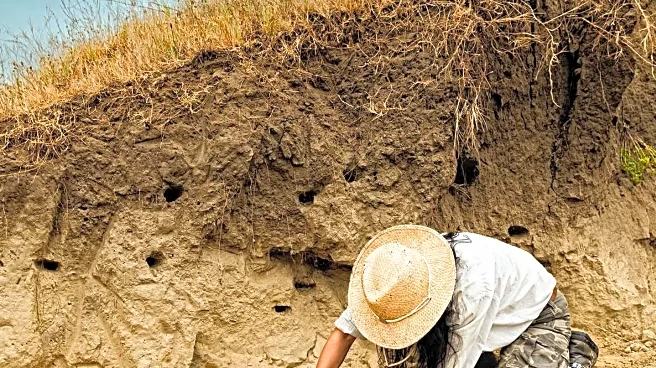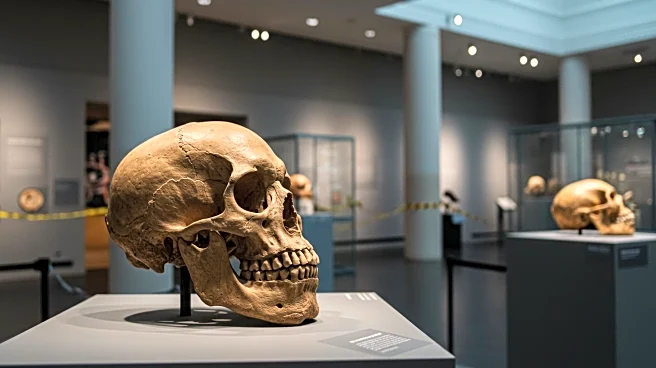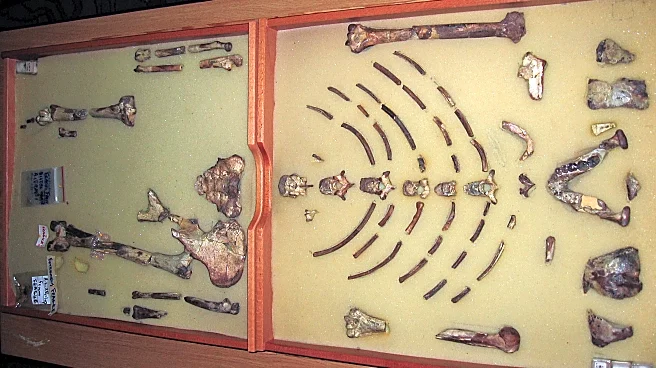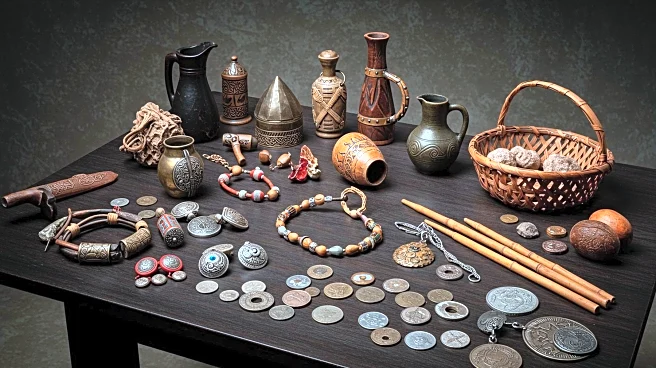Rapid Read • 9 min read
Archaeologists in Gdańsk, Poland, have uncovered a medieval tomb beneath a modern ice cream shop, revealing significant insights into the city's early history. The discovery includes a carved limestone slab depicting a knight in full armor and a well-preserved male skeleton. Preliminary dating suggests the burial originates from the late 13th or early 14th century, coinciding with the rise of the Teutonic Knights in the region. The tomb's location within the historic center of the city, a former stronghold with a castle, church, and cemetery, underscores its importance in understanding the lives and burials of Gdańsk's elite. The limestone slab, imported from Gotland, Sweden, is intricately carved with the image of a knight, which is unusual for the period. The preservation of the slab is remarkable, given its soft nature and the centuries it remained buried.
AD
The discovery of the knight's tomb offers a rare glimpse into Gdańsk's medieval past, illuminating the lives and burials of the city's elite. The find demonstrates the value of archaeological work in modern urban settings, showing how centuries of history can lie hidden beneath everyday structures. The detailed armor, sword, and shield indicate the knight commemorated was of high social status, providing insights into the social, military, and artistic practices of 13th- and 14th-century Poland. The ongoing research, including high-resolution 3D scanning and chemical and genetic analysis, promises to reveal more about the knight's identity and lifestyle, offering unprecedented insights into the appearance, health, and social role of a medieval Polish knight.
Researchers plan to continue their detailed study of both the tomb slab and the skeleton. High-resolution 3D scanning is being used to document and preserve the intricate carving, while chemical and genetic analysis of the bones aims to reveal more about the knight's identity and lifestyle. A facial reconstruction based on the skull is also planned, which may provide further insights into what the knight, dubbed the 'Gdańsk Lancelot,' may have looked like in life. These analyses are expected to provide a deeper understanding of the social and cultural context of medieval Poland.
The discovery highlights the ethical and cultural dimensions of preserving historical sites in urban areas. It underscores the importance of balancing modern development with the conservation of historical artifacts, which can offer valuable insights into past societies. The find also raises questions about the cultural practices surrounding burial and commemoration in medieval Poland, particularly the absence of grave goods and inscriptions linking the knight to the Teutonic Knights.
AD
More Stories You Might Enjoy











